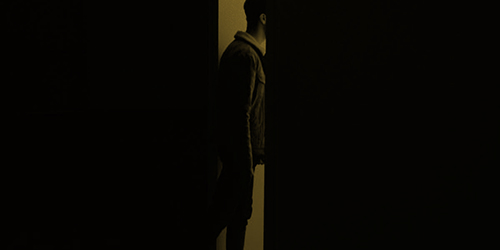
Sexual abuse not only harms the victim, it also harms those families, friends, and communities that are close to the victim. It also harms the perpetrator. As Peter Levine says in Healing Trauma, “trauma is about loss of connection – to ourselves, to our bodies, to our families, to others, and to the world around us.” This loss of connection clearly happens for the victim. It also happens for families and communities, as we often allow ourselves to be divided by who we choose to believe or blame. The perpetrator is also losing connections, as they seek to use their power and authority to meet their individual needs, not the needs of the relationship. Recovery is needed for all.
In 2005, after more than three decades of working with those with trauma, Levine said this: “I have come to the conclusion that human beings are born with an innate capacity to triumph over trauma. I believe not only that trauma is curable, but that the healing process can be a catalyst for profound awakening – a portal opening to emotional and genuine spiritual transformation. I have little doubt that as individuals, families, communities, and even nations, we have the capacity to learn how to heal and prevent much damage done by trauma.”
For all to recover, we must offer the following forms of connection.
listen and believe those who trust us with their stories of abuse
First, listen and believe those who trust us with their stories of abuse. We initially connect by acknowledging the trust they have placed in us, and the reality that they have survived the abuse. When we offer our heart and open ears to their story, they begin the journey from victim to survivor. This is an essential re-connection, both to themselves and to us.
ask the survivor what they need
Second, ask the survivor what they need. Each survivor’s journey in recovery is unique, dependent on their personality, the age the abuse happened, and the current support or lack of support available to them. What next steps they take must be their choice, not ours. A significant harm caused by abuse is that what happened wasn’t the survivor’s choice. An important requirement for the survivor’s recovery, then, is that each step must be their choice. Choosing to tell their story to friends, to a therapist, to a pastor, or to a support group can be a very powerful step toward recovery, when it is their choice.
know the resources that are available in your community and church
Third, know the resources that are available in your community and church that support and facilitate the recovery for survivors and for those who support them. Make these resources visible and accessible, even when no one is asking for them. Remember, most victims will spend years not asking for help. Many of them will find it helpful that, when they are ready, they know where to go for recovery.
hold the perpetrator accountable and offer resources for him or her
Finally, hold the perpetrator accountable and offer resources for him or her. As victims often take years to enter recovery, those who cause harm often take years to see and admit the harm they caused. By the abuse of their power and authority, they took away the choice of the victim. They did not maintain the boundaries that were entrusted to them with their position, and this caused harm. Therefore, these boundaries now need to be held by the community (including churches, schools, and governing boards), until the perpetrator shows clear evidence of entering and maintaining his or her recovery.
Recovery for all requires all of us to be connected “to ourselves, to our bodies, to our families, to others, and to the world around us.”
Editor’s note: After allegations of misconduct at Dock Mennonite Academy became public in March, Mosaic Conference received requests to provide resources for pastors and youth leaders to understand and lovingly respond as congregational members shared stories of trauma and abuse from their own lives. This is the last in a series of four articles by John Drescher-Lehman, LCSW designed to provide information on abuse-related trauma and guidance for pastors and congregations who desire to foster openness and healing.
Resources for Trauma Series
by John Drescher-Lehman, LCSW
- Part 1: This Can’t be Happening
- Part 2: Sexual Abuse is More than Sexual
- Part 3: Disclosing Abuse Takes (Y)ears
- Part 4: Recovery for All








 As spiritual leaders, we hold power – it is given to us whether we want it or not. Therefore, it is important to understand and establish proper relational boundaries. Such boundaries help us maintain clear professional relationships and signal to others that it is safe to trust us. They aren’t intended to shackle us but to free us in our work as pastors and leaders. Healthy boundaries protect both us and our congregations: us from other people’s problems becoming overwhelming, and congregants’ from our unintentional misuse of power.
As spiritual leaders, we hold power – it is given to us whether we want it or not. Therefore, it is important to understand and establish proper relational boundaries. Such boundaries help us maintain clear professional relationships and signal to others that it is safe to trust us. They aren’t intended to shackle us but to free us in our work as pastors and leaders. Healthy boundaries protect both us and our congregations: us from other people’s problems becoming overwhelming, and congregants’ from our unintentional misuse of power. When someone is the victim of sexual abuse, they are not able to do anything to stop the abuse. Therefore, sometimes the best way to deal with it is to try not to notice it is happening, or not to remember that it has happened. We have many psychological defenses that help us deny, avoid, and reinterpret what has happened to us, especially when what happened was overwhelming and traumatic. Often this is the best line of defense for a child who is being sexually abused, when no one except the abuser knows what is happening.
When someone is the victim of sexual abuse, they are not able to do anything to stop the abuse. Therefore, sometimes the best way to deal with it is to try not to notice it is happening, or not to remember that it has happened. We have many psychological defenses that help us deny, avoid, and reinterpret what has happened to us, especially when what happened was overwhelming and traumatic. Often this is the best line of defense for a child who is being sexually abused, when no one except the abuser knows what is happening.